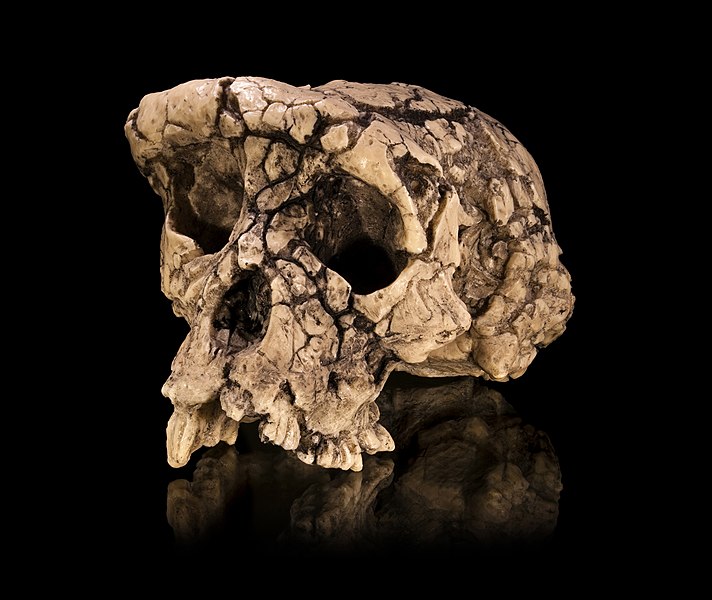 Brain Shape Confirms Controversial Fossil as Oldest Human Ancestor | Observations, Scientific American Blog Network
Brain Shape Confirms Controversial Fossil as Oldest Human Ancestor | Observations, Scientific American Blog NetworkA fascinating article appears in this week's Scientific American confirming that a seven million year-old fossil skull, nicknamed Toumaï, found in Djurab Desert in Chad, Africa and announced in 2002, may well be the oldest known ancestor of Homo sapiens. The species the skull was from had been given the name Sahelanthropus tchadensis (Sahel ape from Chad) after the Sahel area of Africa, a fertile area immediately south of the Sahara and, in more recent human history, believed to be an important migration route for human groups moving between the Nile and West Africa.
The discoverers, a team lead by Michel Brunet, a paleontologist at the University of Poitiers, France, had always claimed that the skull was from a species close to the point of departure of Homo and Pan (Chimpanzees) but the question was on which branch of the diverging tree it should be placed - in other words was it the skull of a hominin or an ape.
Now Thibaut Bienvenu of the Collège de France and his colleagues have manages to reconstruct the endocast of the inside of the brain case and so infer the shape of the brain which once occupied it. They did this by imaging it with 3D X-ray synchrotron microtomography, which is a technique based on high-energy x-rays produced by electrons accelerated in a sychrocyclotron, which have enough power to smash through hard materials such as the mineral matrix which filled the interior of the skull.
This technique produces a computer image which when processed to remove the matrix and allow for deformity of the skull, showed unmistakeable signs of a hominin brain the size of that of a chimpanzee:
The resulting virtual reconstruction of the endocast reveals that Toumaï had a cranial capacity of 378 cubic centimeters—consistent with earlier estimates. This puts it within the range of chimp cranial capacity. In comparison, modern humans have brains around three times larger than that. But though Toumaï’s brain was apelike in its small size, it was apparently homininlike in other ways. In a presentation given on April 2 at the annual meeting of the Paleoanthropology Society, Bienvenu reported that the endocast shows strongly posteriorly projecting occipital lobes, a tilted brainstem, and a laterally expanded prefrontal cortex, among other hominin brain characteristics.
The tilted brainstem, together with the position of the foramen magnum (the hole in the base of the skull through which the spinal cord passes) show signs of evolution towards a bipedal gait. This also tells us that bipedalism and brain reorganisation preceded human intelligence and had begun at least 6 million years ago.
It will be interesting to see how Creationists, if they don't studiously ignore it altogether or dismiss it as a forgery, cope with this find which, if ever there was an example of a 'transitional fossil' between chimpanzee and humans, this is it. Will they point to the disagreement between paleoanthroplogists about whether this is an ape or a hominin as an example of how science is never certain about anything (as though that somehow discredits science) or will they point out that Sahelanthropus tchadensis still had a long way to go before it was unmistakeably Homo sapiens?
This difficulty in telling one from the other is precisely what we would expect of an early human ancestor close to the divergence of humans from chimpanzees. We would expect it to have characteristics of both and characteristics such as the heavy brow ridges which have been retained in chimps, are present in many other early hominids but which are absent in most humans today. As we move back in time towards when the distinction between any two diverging species was blurred, so we expect the difficulty in distinguishing between them to increase and revolve around finer points of detail, and with that, the arguments to be less easy to resolve. This is science.
The 'argument' about whether this species was an ape or a human is entirely semantic of course, because, biologically, it's an argument about whether this species was a chimpanzee ape of a hominin ape.
See also, An Ancestor to Call Our Own [Preview]
'via Blog this'


This comment has been removed by a blog administrator.
ReplyDeleteFaizan
DeleteThanks for that. Your comment has been deleted as you requested.